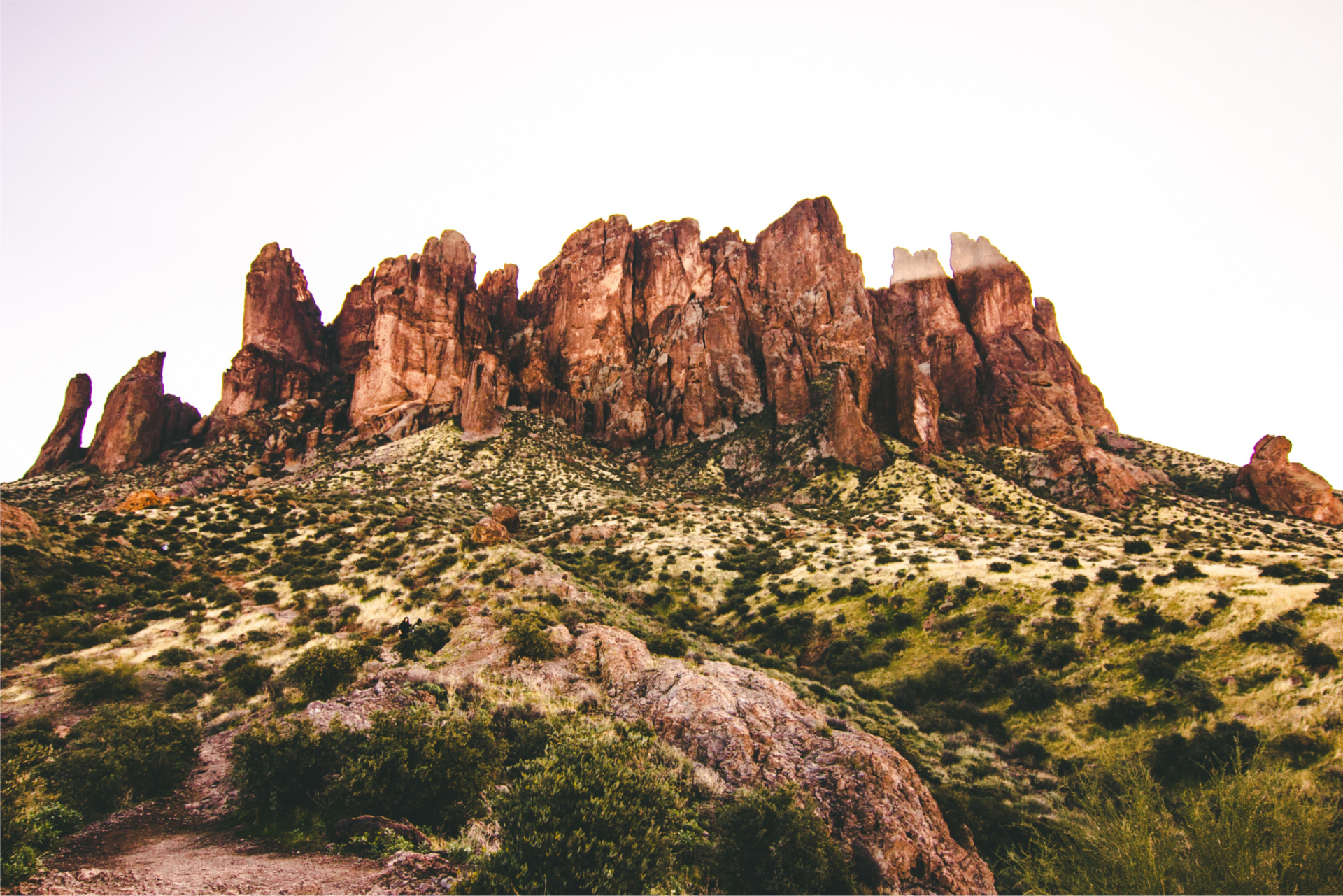
City of Peoria
Example hero paragraph text.
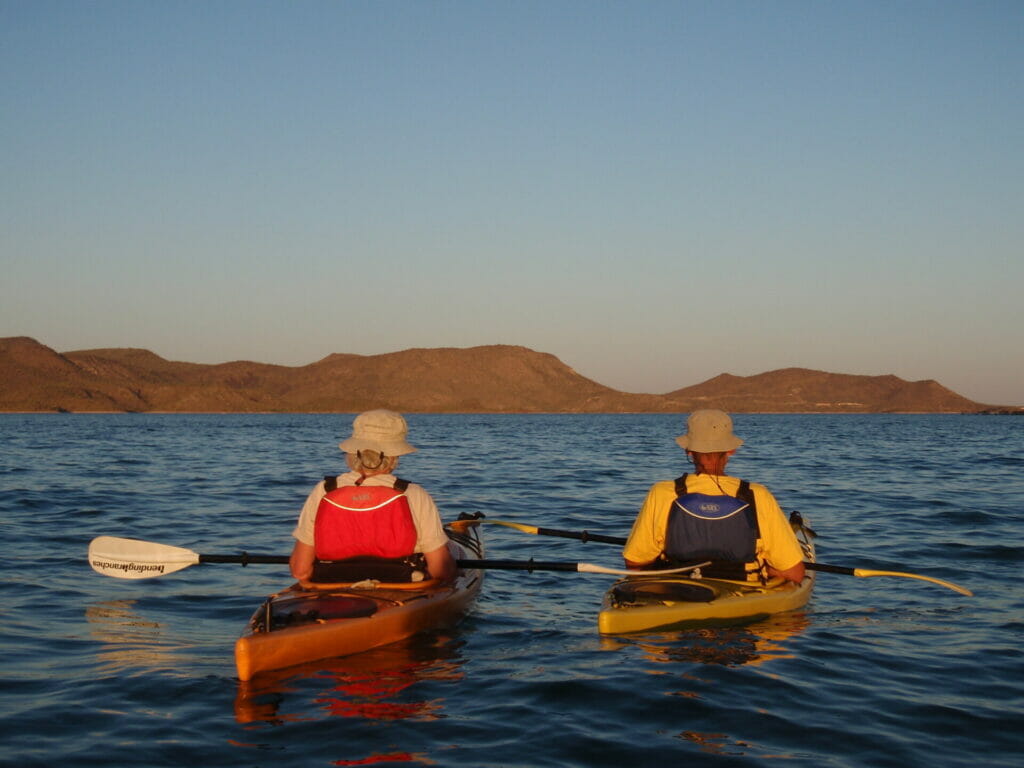
City of Peoria
2019 – 2023
Ranked as the No. 1 place to live in Arizona by Money Magazine and the only Arizona city named as one of the best cities in the U.S. by Yahoo! Finance, the city of Peoria is currently home to more than 171,000 residents. The city enjoys a reputation as a family-oriented, active community with an exceptional quality of life. Peoria entertainment and recreational amenities include popular attractions such as Lake Pleasant, a large network of trails and open space, community parks, recreation centers, community theater, libraries, pools, and the spring training home for the San Diego Padres and the Seattle Mariners.
The city has demonstrated a strong commitment to sustainability, as evidenced by its directive to incorporate LEED building design standards, a council-adopted Sustainability Action Plan, and a dedicated full-time staff person to manage and coordinate organization-wide sustainability initiatives.
City of Peoria projects
Sustainability and resilience planning
Taught by Mikhail Chester, students from the Ira A. Fulton Schools of Engineering collaborated with the City’s Sustainability and Water Conservation Coordinator to review peer community sustainability dashboards and green building codes to recommend strategies for the City of Peoria to build out its sustainability planning.
Taught by Malcom Goggin and LaDawn Lingard, two graduate students independently researched and developed recommendations for funding strategies and opportunities to elevate the City’s Sustainability Action Plan (SAP).
For the second part of the MSL capstone project, taught by Shirley-Ann Behavresh and Stephanie Pfirman, students analyzed the results of the public outreach campaign to inform the development of key performance indicators (KPIs) for interdepartmental sustainability initiatives.
Taught by Shirley-Ann Behavresh and Stephanie Pfirman, students elevated the work of a spring 2020 class by investigating and developing an outreach campaign to collect feedback from residents on the City’s Sustainability Action Plan (SAP).
Taught by Candice Carr Kelman, students analyzed and compared Peoria’s Sustainability Action Plan to other plans across the United States in a comprehensive benchmarking study and developed recommendations to further strengthen the City’s sustainability plan.
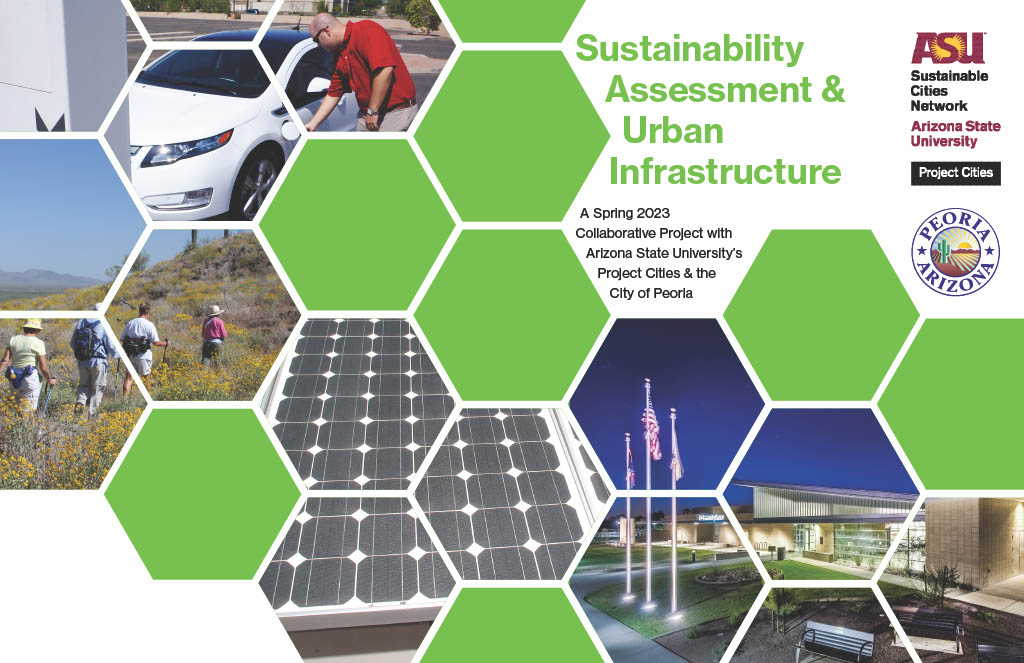
Sustainability Assessment and Urban Infrastructure

Sustainable Peoria: Strategic Plan Updates and Program Funding
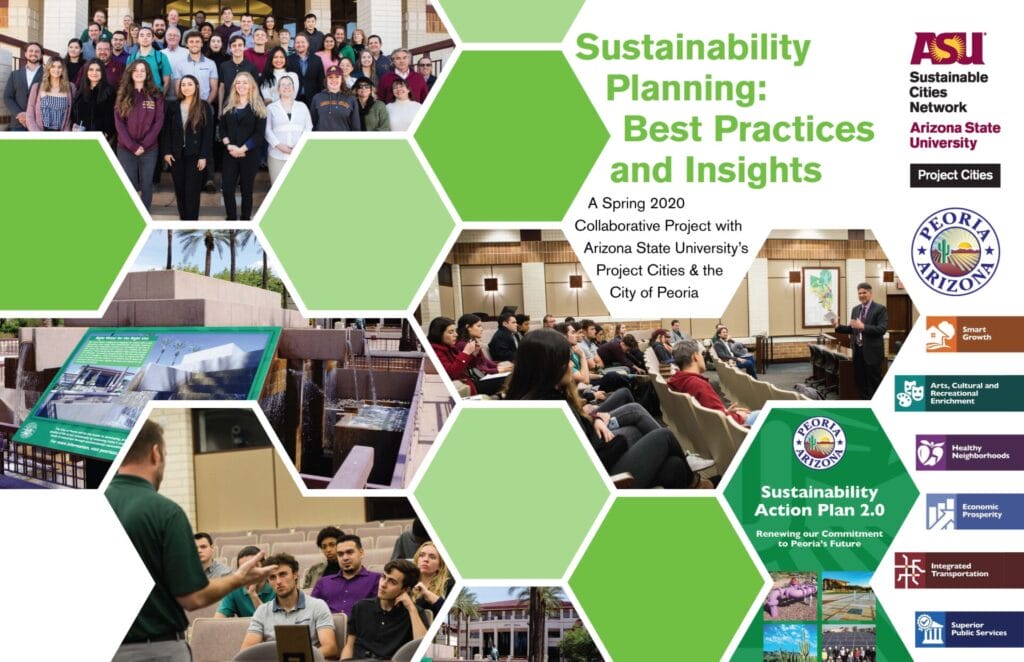
Sustainability Planning: Best Practices and Insights
Historic preservation
Taught by Malcolm Goggin and LaDawn Lingard, three capstone students distributed and analyzed community survey results to recommend strategies for present and future development of the Palo Verde Ruin.
Taught by Malcolm Goggin and LaDawn Lingard, one capstone student worked with Peoria’s Library Manager to research and review peer community historic preservation plans to provide recommendations for the preservation of the Palo Verde Ruin.
Taught by Daniel Schugurensky, three capstone students identified six peer communities and conducted a literature review of historic preservation best practices and strategies.
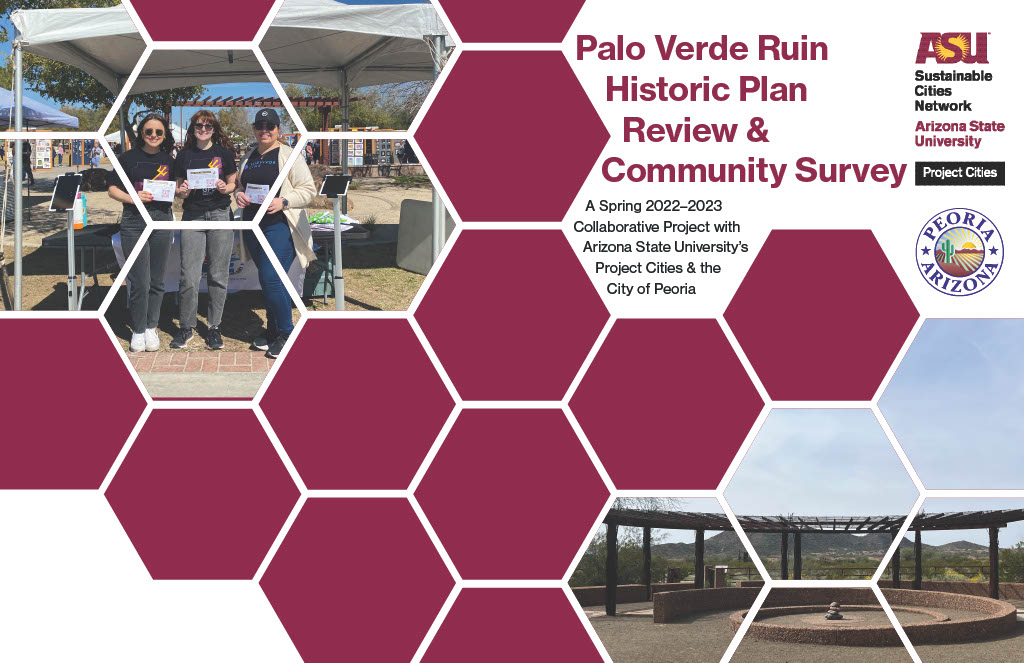
Palo Verde Ruin Historic Plan Review and Community Survey
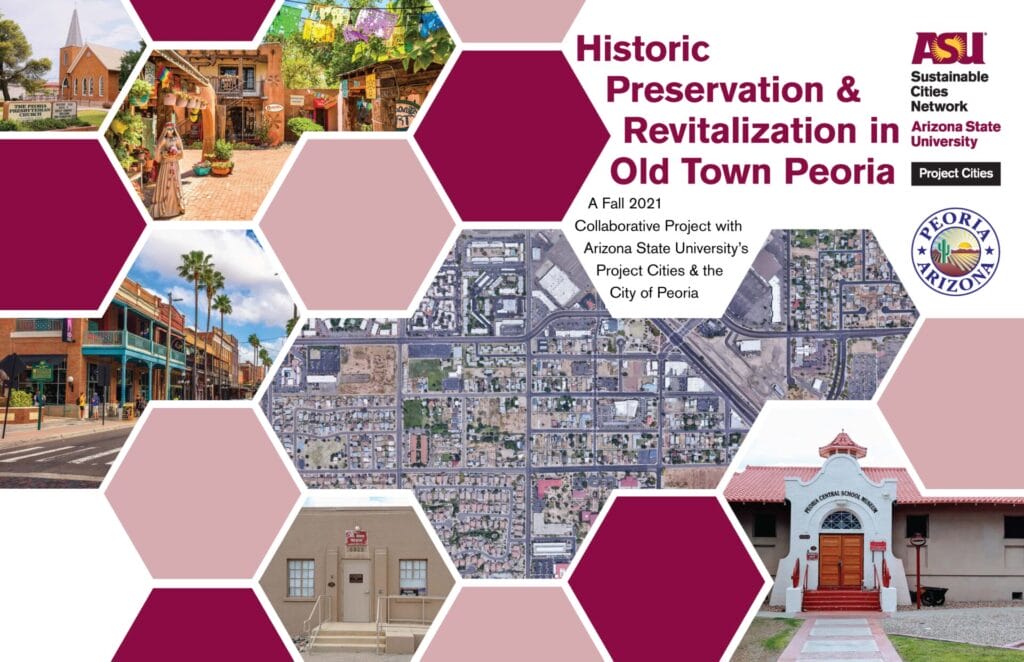
Historic Preservation & Revitalization in Old Town Peoria
Data governance and content management
Taught by Leeanne Sorenson, students collaborated with Peoria’s Chief Information Office to analyze and identify industry standards the City could incorporate to make the website more efficient.

Strategies for Peoria Data & Content Management
Sustainable waste management
Taught by Albert “Al” Brown, one capstone student, conducted a life cycle assessment and cost-benefit analysis for green waste.
Taught by Albert “Al” Brown, a capstone student, investigated the benefits of recycling fine glass and conducted a life cycle assessment to recommend best practices for this process.
Taught by Albert “Al” Brown, one group of students researched best practices for recycling e-waste, and a second group investigated the feasibility of a biomass gasification program.
Taught by Albert “Al” Brown, students examined the challenges and opportunities for these materials and conducted case study analysis of peer communities. to provide Peoria with recommendations for exploring the recyclable reuse market that focused on building partnerships with other communities and funding strategies.

Opportunities for Green Waste Scaling in Peoria

Novel Applications for Fine Glass Waste: Reuse and Recycling
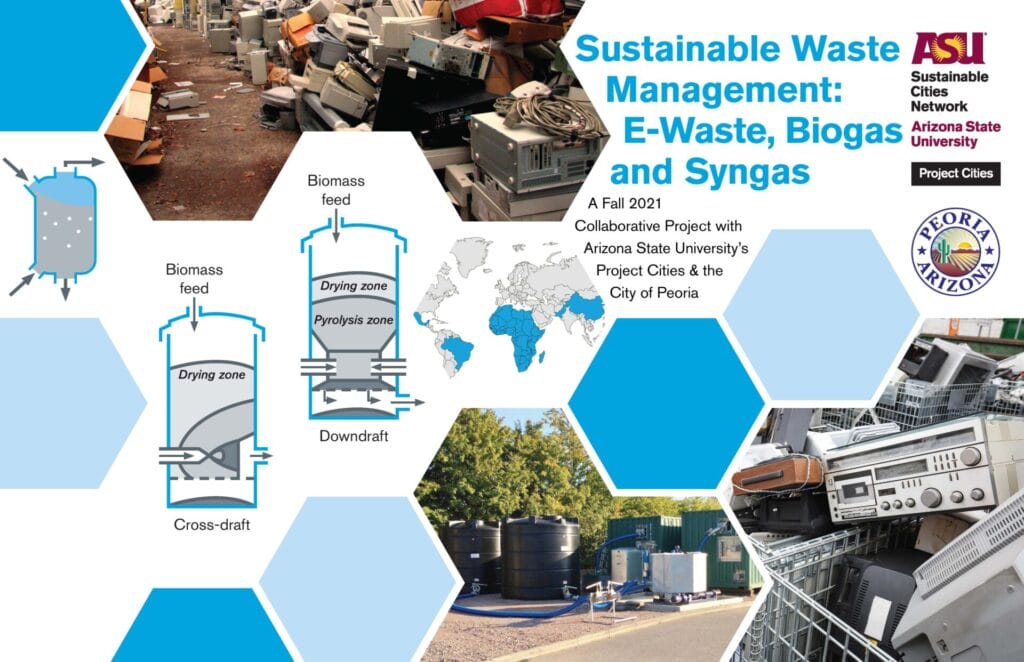
Sustainable Waste Management: E-Waste, Biogas, and Syngas
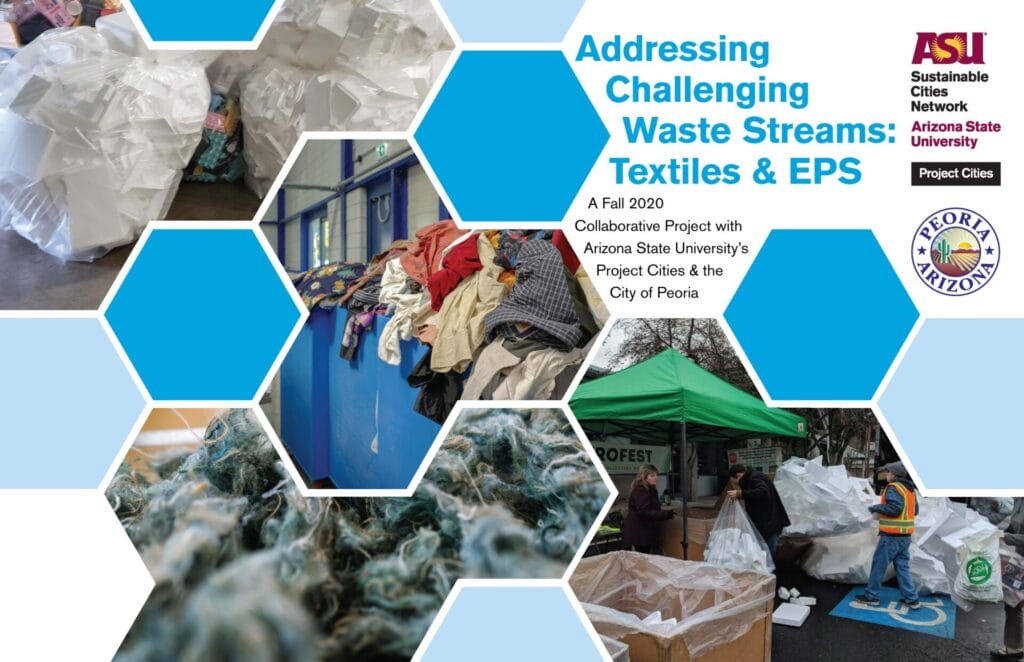
Addressing Challenging Waste Streams Textiles & EPS
Public safety
Taught by Kathryn Lambrecht, students collaborated with Peoria’s Emergency Manager to design messaging about extreme heat for the City of Peoria, focusing on the user experience of the messaging and various audiences like Peoria’s unhoused population and seniors.
Taught by Malcolm Goggin and LaDawn Lingard, one capstone student researched safe storage practices for lithium-ion batteries (LIB) and recommended safety strategies for Peoria’s Fire-Medical department.
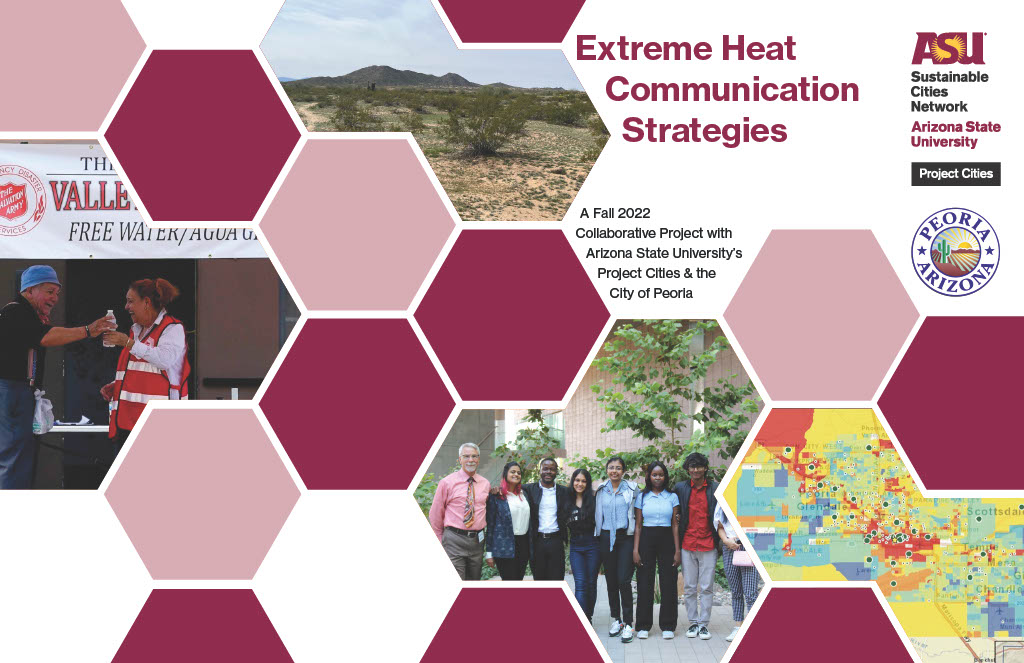
Extreme Heat Communication Strategies

Battery Energy Storage Safety in Residential Settings
Transportation
Taught by Mikhail Chester, students researched microtransit models in other urban areas, as well as identified opportunities for implementing microtransit in Peoria’s existing transportation systems.
Taught by Nathan Parker, undergraduate students from the School of Sustainability reviewed strategies for fleet electrification.
Taught by David King, urban planning masters students conducted a benchmarking study of peer communities to identify best practices in managing transit circulator programs locally and globally. Students also evaluated first-mile/last-mile conditions for Peoria’s transit circulator users to identify issues and provide strategic recommendations to remedy any potential gaps.
Taught by Bailey Borman, students used the human-centered problem-solving method known as “Design Thinking” to develop potential solutions to the observed under-utilization of the Peoria POGO circulator by young people (12 – 18 years old).
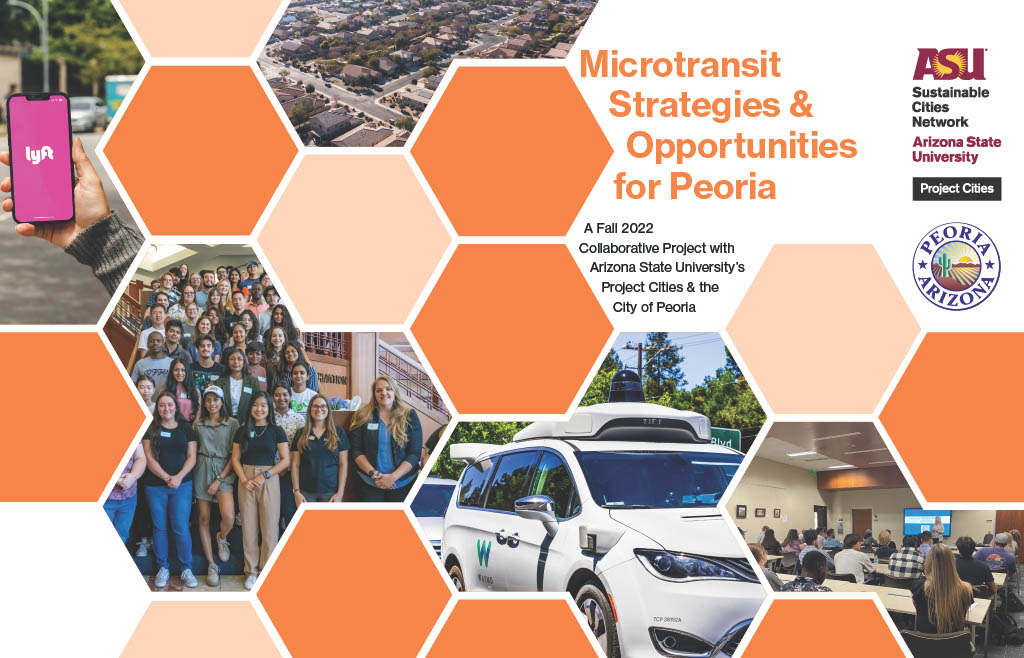
Microtransit Strategies & Opportunities for Peoria
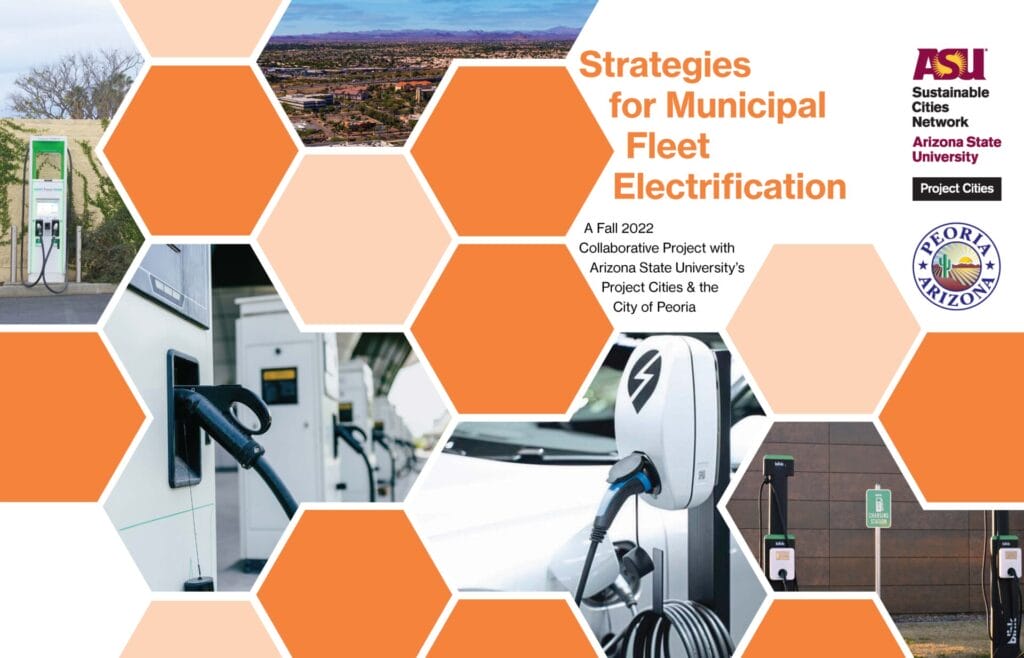
Strategies for Municipal Fleet Electrification
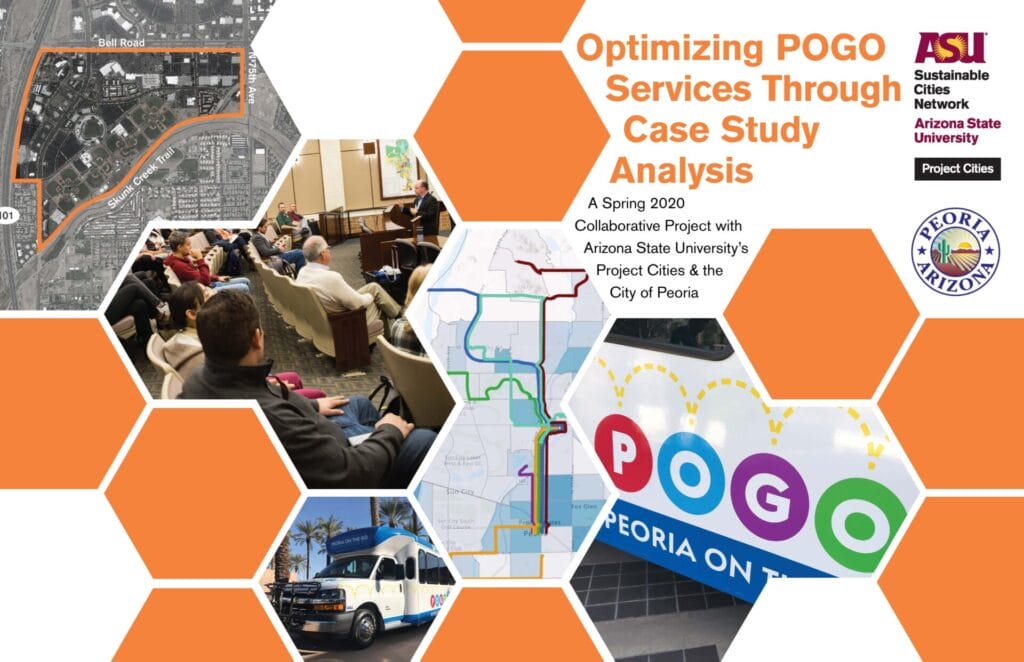
Optimizing POGO Services Through Case Study Analysis
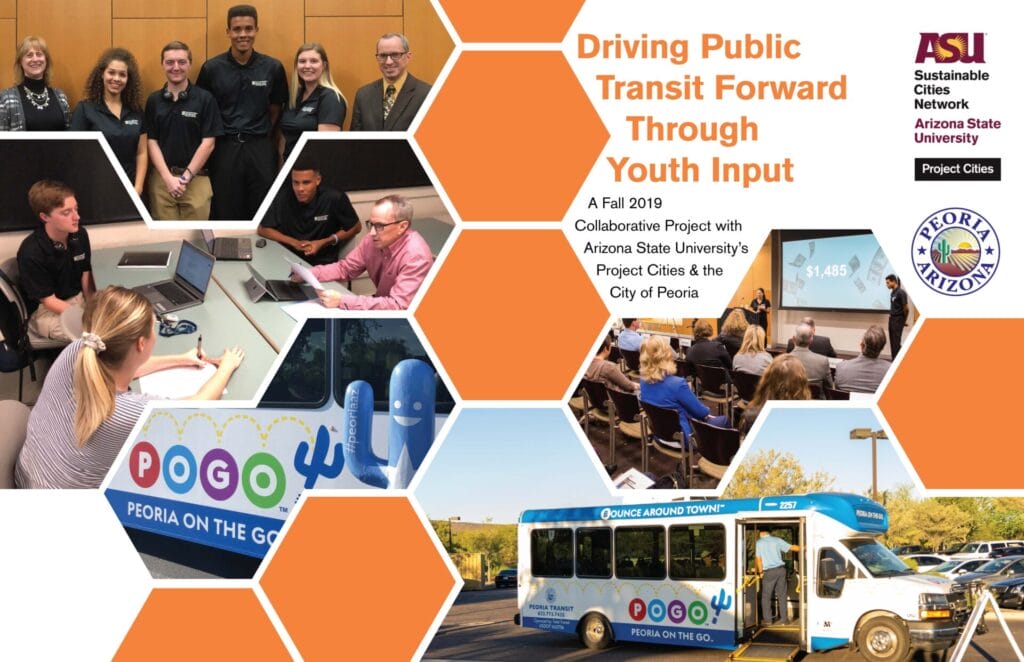
Driving Public Transit Forward Through Youth Input
Community placemaking and engagement
Taught by Aaron Guest, graduate students from the Edson College of Nursing and Health Innovation conducted an age-friendly assessment to help identify and compile age-friendly services and interventions to provide recommendations on how Peoria can integrate these into a comprehensive resource guide.
Taught by Gregory Broberg, undergraduate students conducted a community survey of Peoria residents to determine how they access information and to inform recommendations for Peoria’s communication strategies.
Taught by LaDawn Haglund, Fall 2021: Students interviewed Peoria staff about their perceptions of sustainability and human rights in the context of city planning.
Taught by Gregory Broberg, students developed and conducted a multi-layer study which sought to identify residents’ views on placemaking and characteristics thereof in three targeted character areas: “Old Town” Peoria, the “P83” District, and the “Four Corners” area. Under faculty and community guidance, students conducted a wide-reaching survey of Peoria residents.
Taught by Meagan Ehlenz and David King, one graduate student conducted a case study analysis and literature review to identify key interventions and redevelopment opportunities for Peoria’s P83 district.
Taught by Gregory Broberg, students developed and conducted a multi-layer study which sought to identify residents’ views on placemaking and characteristics thereof in three targeted character areas: “Old Town” Peoria, the “P83” District, and the “Four Corners” area. Under faculty and community guidance, students conducted a wide-reaching survey of Peoria residents.
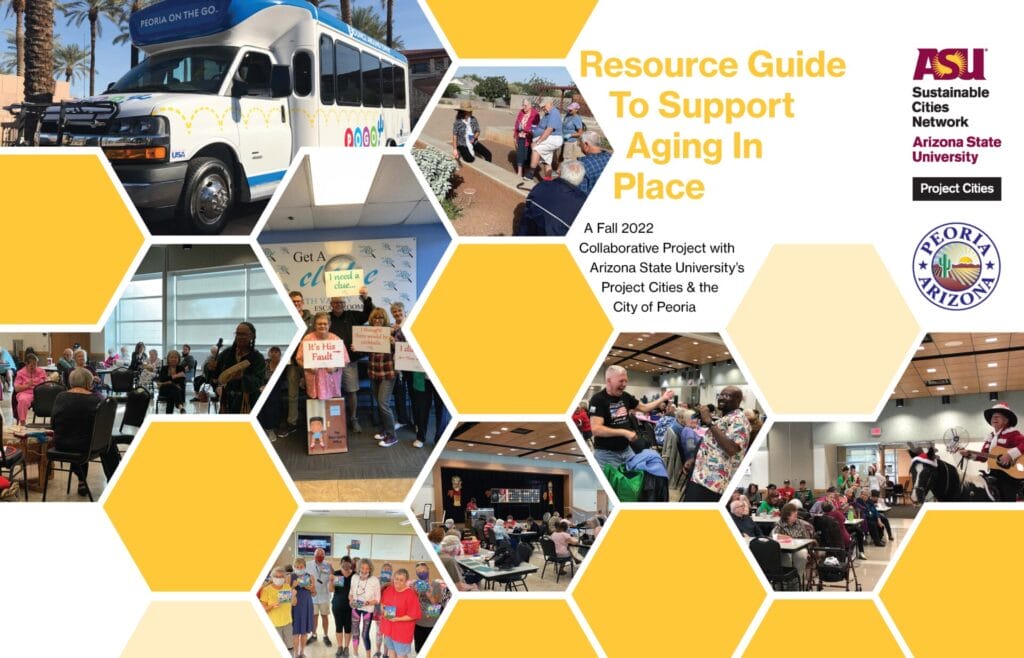
Resource Guide to Support Aging in Place
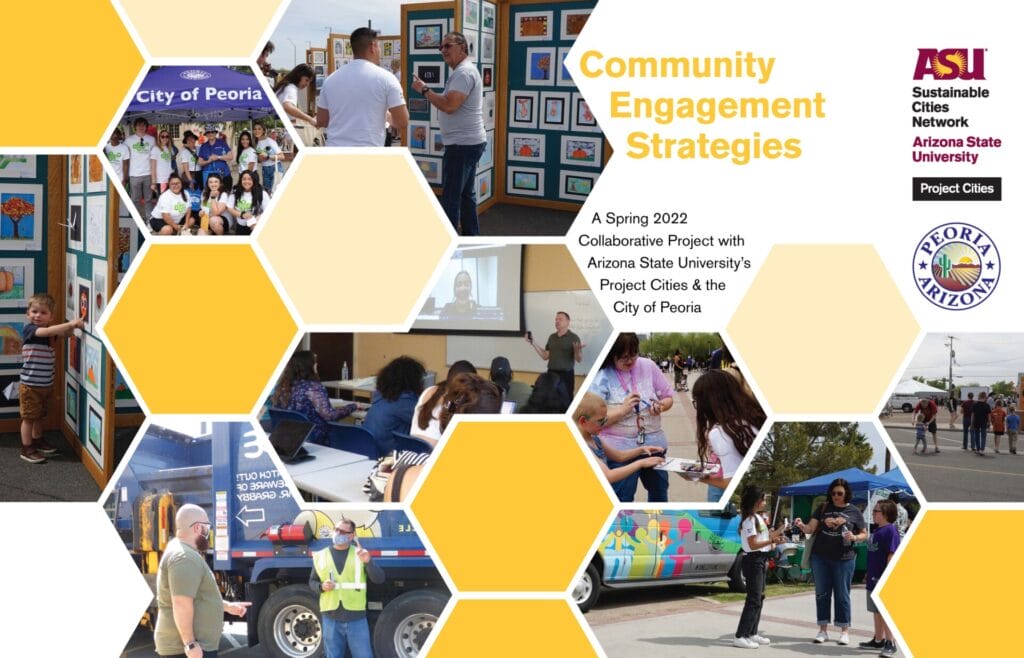
Community Engagement Strategies
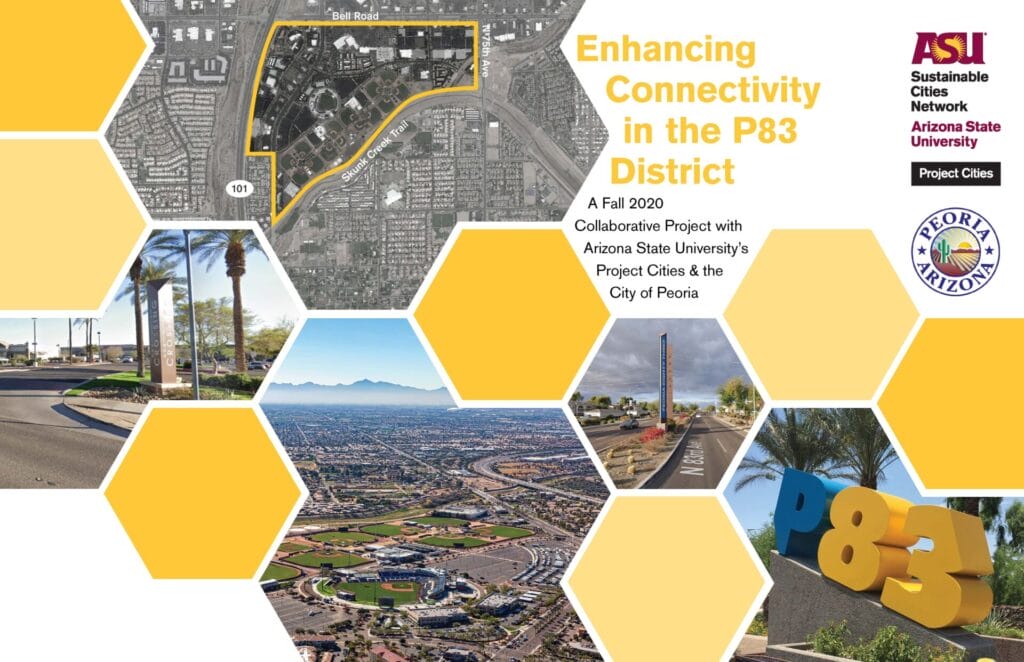
Enhancing Connectivity in the P83 District
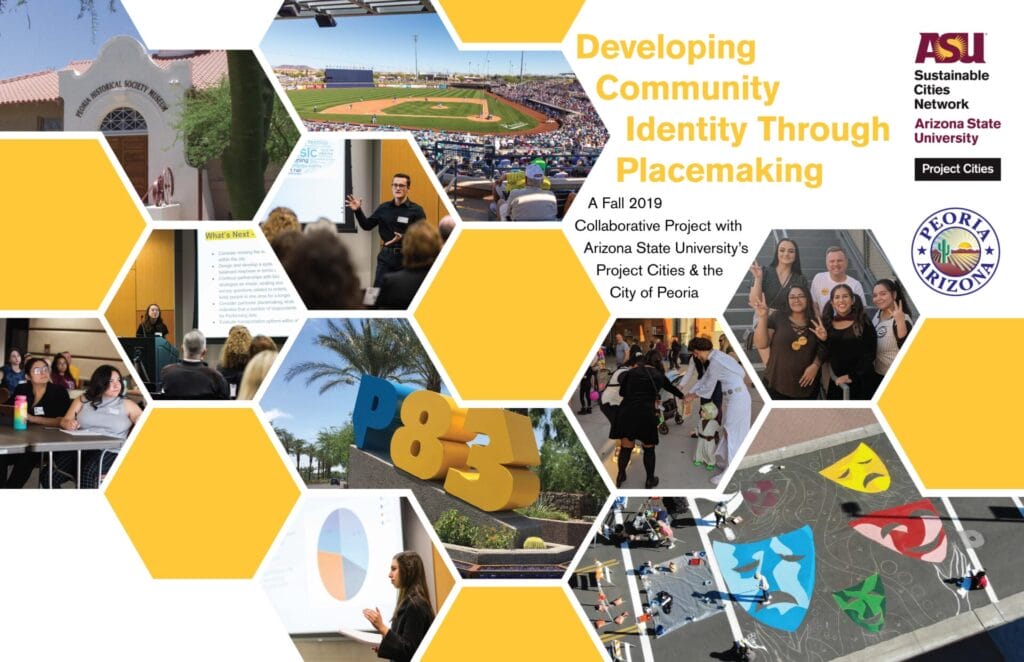
Developing Community Identity Through Placemaking
Water policy strategies
Taught by Candice Carr Kelman, students split into six groups to research peer community policies for water and land use to recommend strategies for Peoria’s water policies, codes, and ordinances.
Taught by Malcolm Goggin and LaDawn Lingard, one capstone student collaborated with Peoria’s Water Services Director to research best practices for tiered water pricing and recommended ideal pricing levels to encourage water conservation.
Taught by Majia Nadesan, a graduate student carried the Fall ‘19 crisis communication class’ work forward to the next level by conducting targeted focus group studies of Peoria residents, in order to assess the effectiveness of the messaging campaigns developed by her peers and identify the strongest strategies.
Taught by Larry Olson, students in a professional certificate program applied technical knowledge and industry expertise to develop guiding strategies for proactive water conservation measures, and shortage response plans, if needed.
Taught by Majia Nadesan, students learned theoretical and professional perspectives of crisis communications, which were then applied to develop sample messaging and visualizations for the City of Peoria.
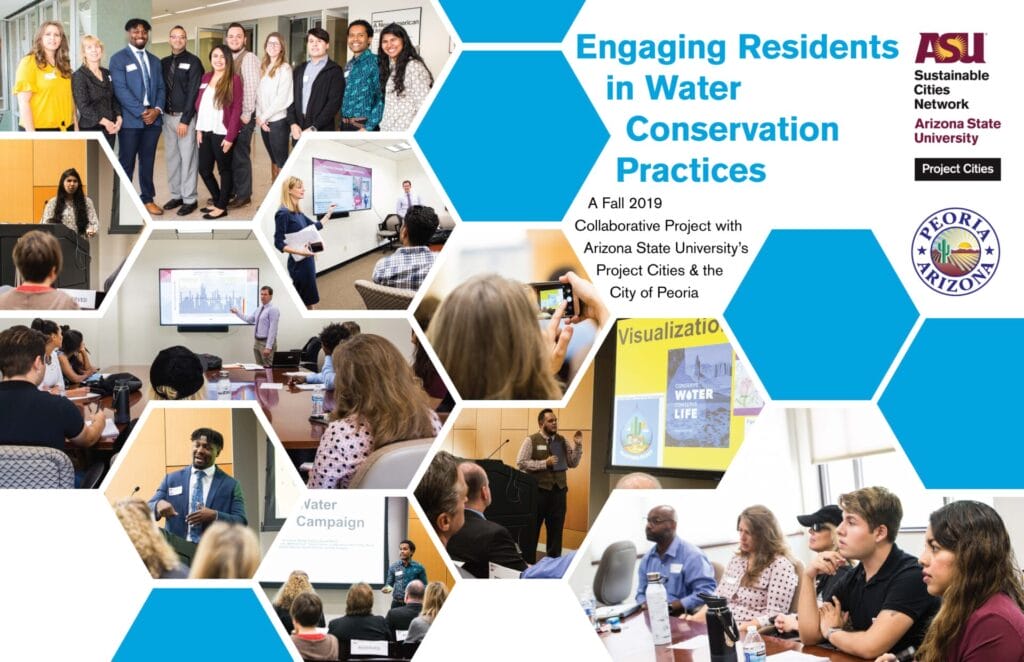
Engaging Residents in Water Conservation Practices

Planning for Scarcity: Water Conservation in Peoria, Arizona
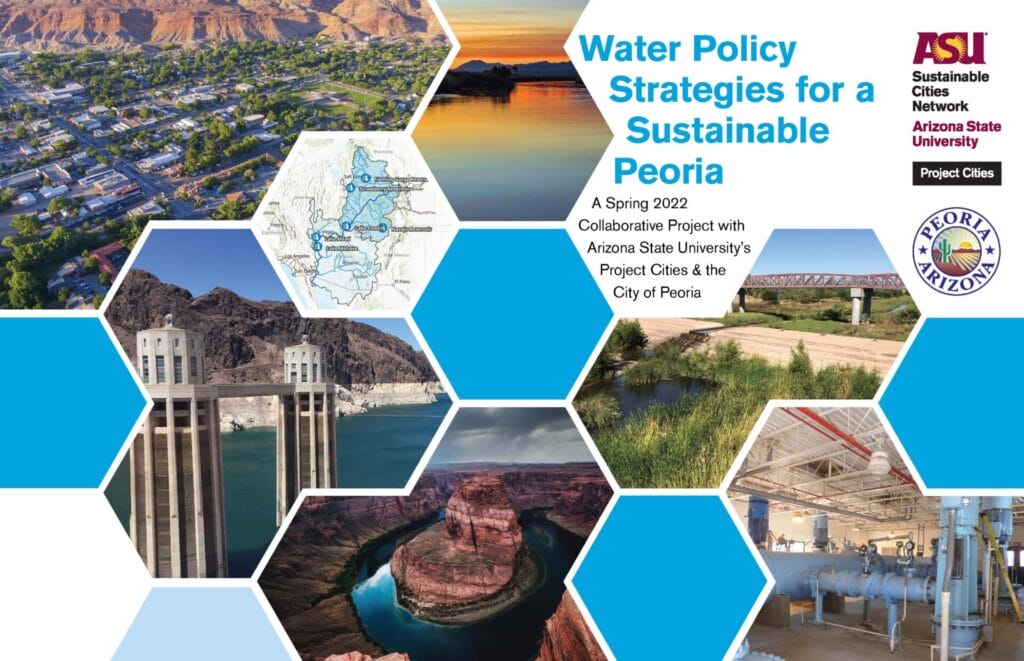
Water Policy Strategy: Tiered Rates and Water Management
Public messaging campaigns
Taught by Nicole Lee, students split into two groups to work with city staff on developing messaging campaigns to educate residents about two services: the relaunched POGO circulator and the city’s sustainable waste management programs.
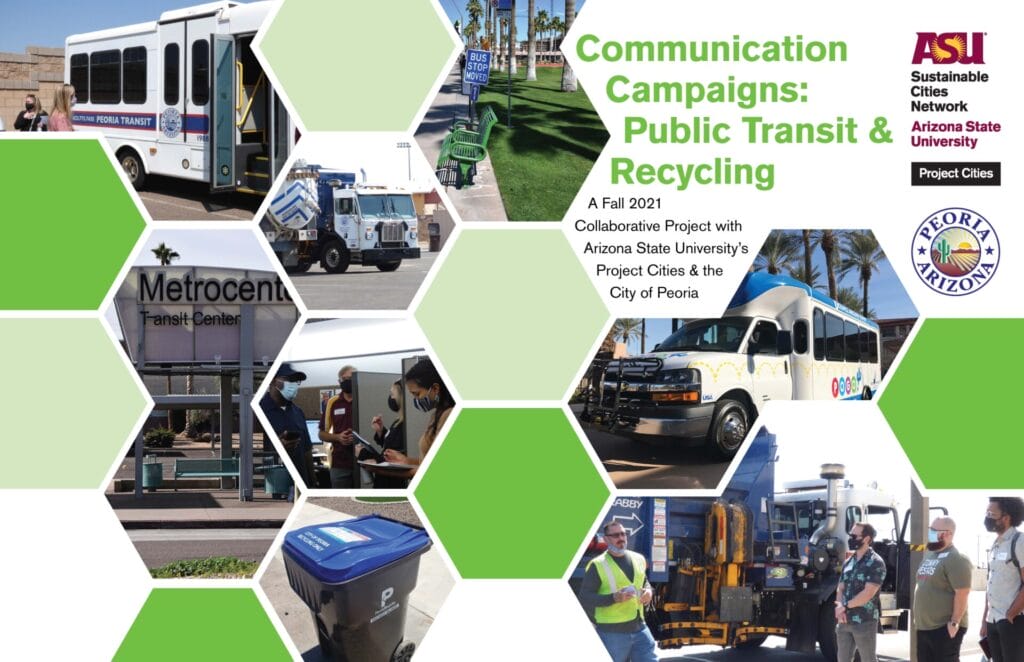
Communication Campaigns: Public Transit & Recycling
Dark sky ordinances
Taught by Nalini Chhetri, two students researched the benefits and requirements for attaining the Dark Sky designation and provided recommendations for adapting the existing code.
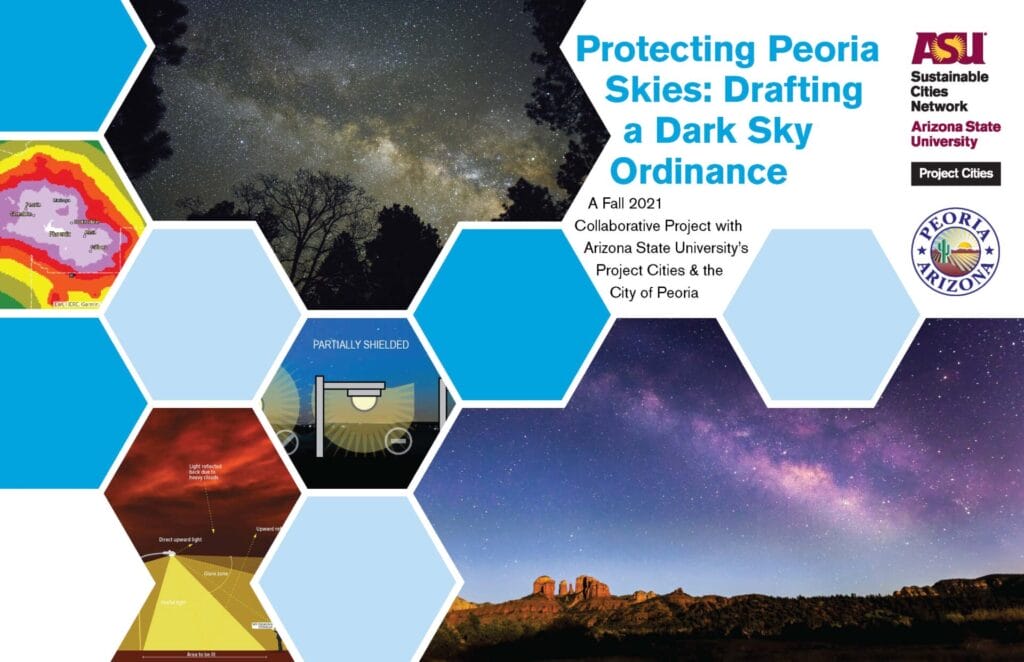
Protecting Peoria Skies: Drafting a Dark Sky Ordinance
Affordable and attainable housing
Taught by Meagan Ehlenz, students conducted peer community analysis by reviewing zoning ordinances related to the implementation of ADU strategies.
Taught by Deirdre Pfeiffer, students studied housing trends in Peoria to discover existing gaps in livability as caused by sociological and financial factors.

Sustainable and Affordable Growth in Peoria
Community forestry
Taught by Paul Prosser, students continued the work of the Fall 2020 semester by implementing the project plan
Taught by Paul Prosser, students conducted a literature review of peer communities to identify best practices for shade planning. Students developed a detailed project plan.
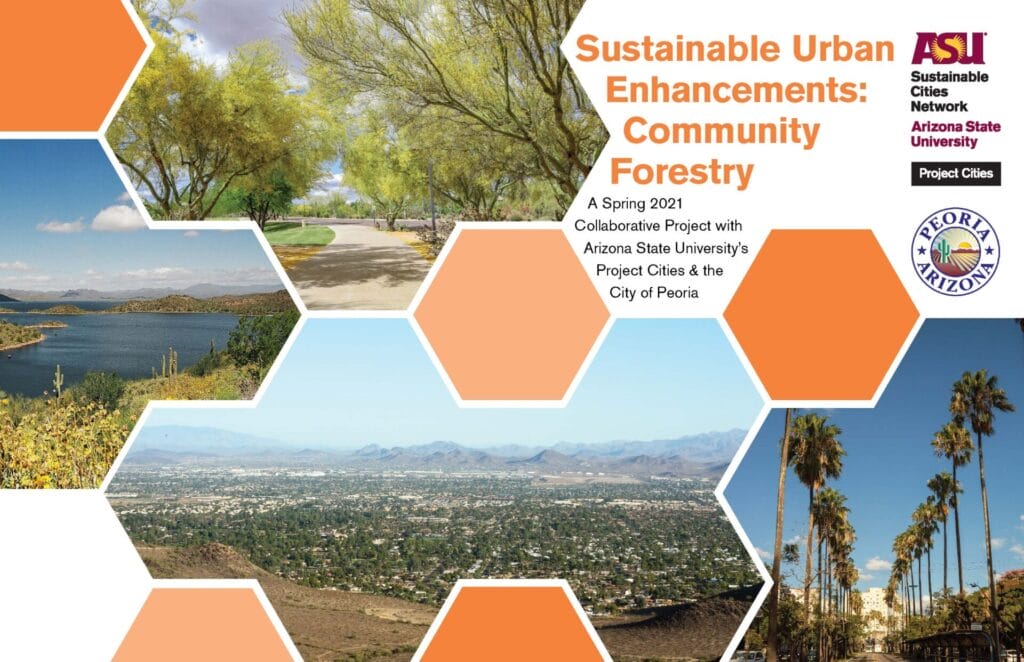
Sustainable Urban Enhancements: Community Forestry
COVID-19 community assessment
Taught by Gregory Broberg, students examined the lived experiences of Peoria residents throughout the pandemic, particularly by conducting workshops with community organizations to identify the unmet needs of Peoria residents and provided recommendations for connecting local resources with Peoria’s residents and community organizations
Taught by Majia Nadesan, students conducted literature reviews to identify best practices in risk communication that will convey safety information and share resources to Peoria’s residents without causing fear or backlash in light of the pandemic. Students developed recommendations to enhance Peoria’s communications channels to share resources and information with the public.
Taught by Deborah Salon, students evaluated various areas of impact, including restaurants and fitness centers to inform recommendations for the City of Peoria to support their local businesses while activating its key business corridors, like the P83 district.
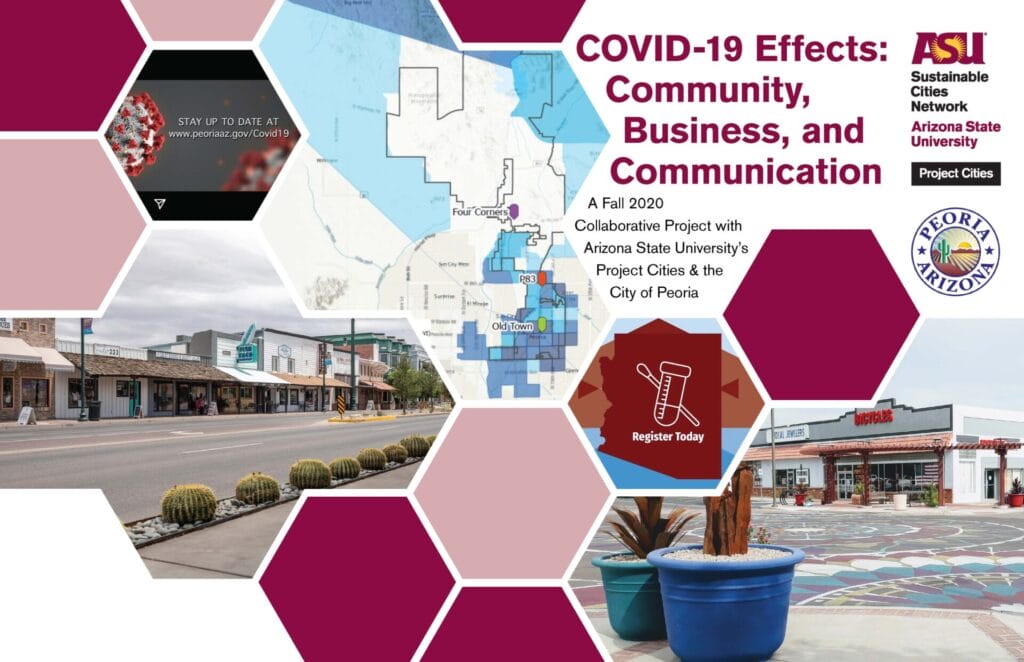
COVID-19 Effects: Community, Business, and Communication
Recreation corridor planning
Taught by Joshua Loughman, students caried forward the work of the past semesters’ through a detailed feasibility assessment and refinement of the ideas proposed. Students assessed considerations and potential barriers such as right-of-way, grade, ADA compliance, code issues, and property ownership.
Taught by Joshua Loughman, students conducted an initial assessment of potential activation opportunities for the Skunk Creek corridor, with an eye toward both passive and active recreation opportunities. Students provided tiered recommendations for the city in an attempt to help prioritize high-impact investments to benefit members of the surrounding community.
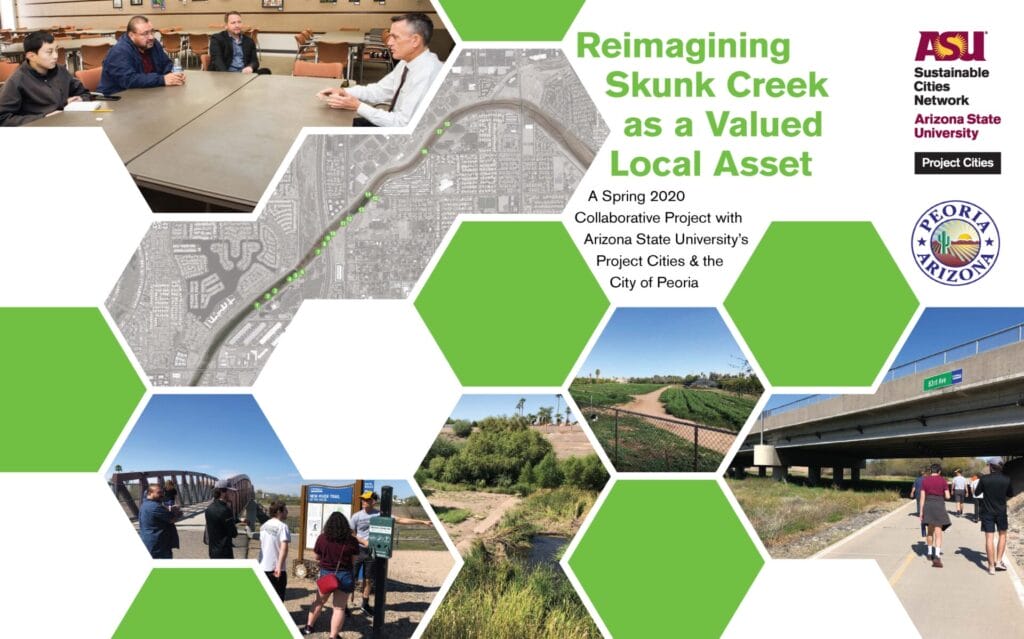
Reimagining Skunk Creek as a Valued Local Asset
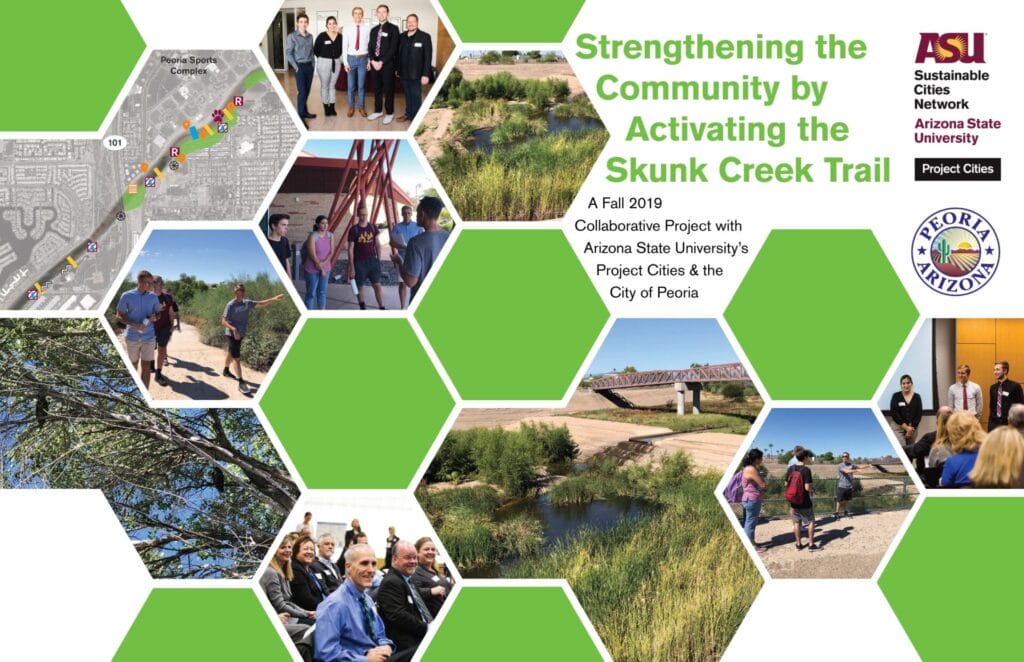
Strengthening the Community by Activating the Skunk Creek Trail
Smart city technologies
Taught by Nalini Chhetri, sustainability students explored potential strategies for local governments in pursuit of becoming a Smart City and developed short-term goals specific to Peoria.
Taught by Michael Wiles and Patrick Phelan, interdisciplinary students in this class focused on general Smart Cities market research and developed long-term project goals for Peoria’s consideration.

Envisioning a Smart Peoria: Leading the Way with Innovative New Technology
Peoria in the news
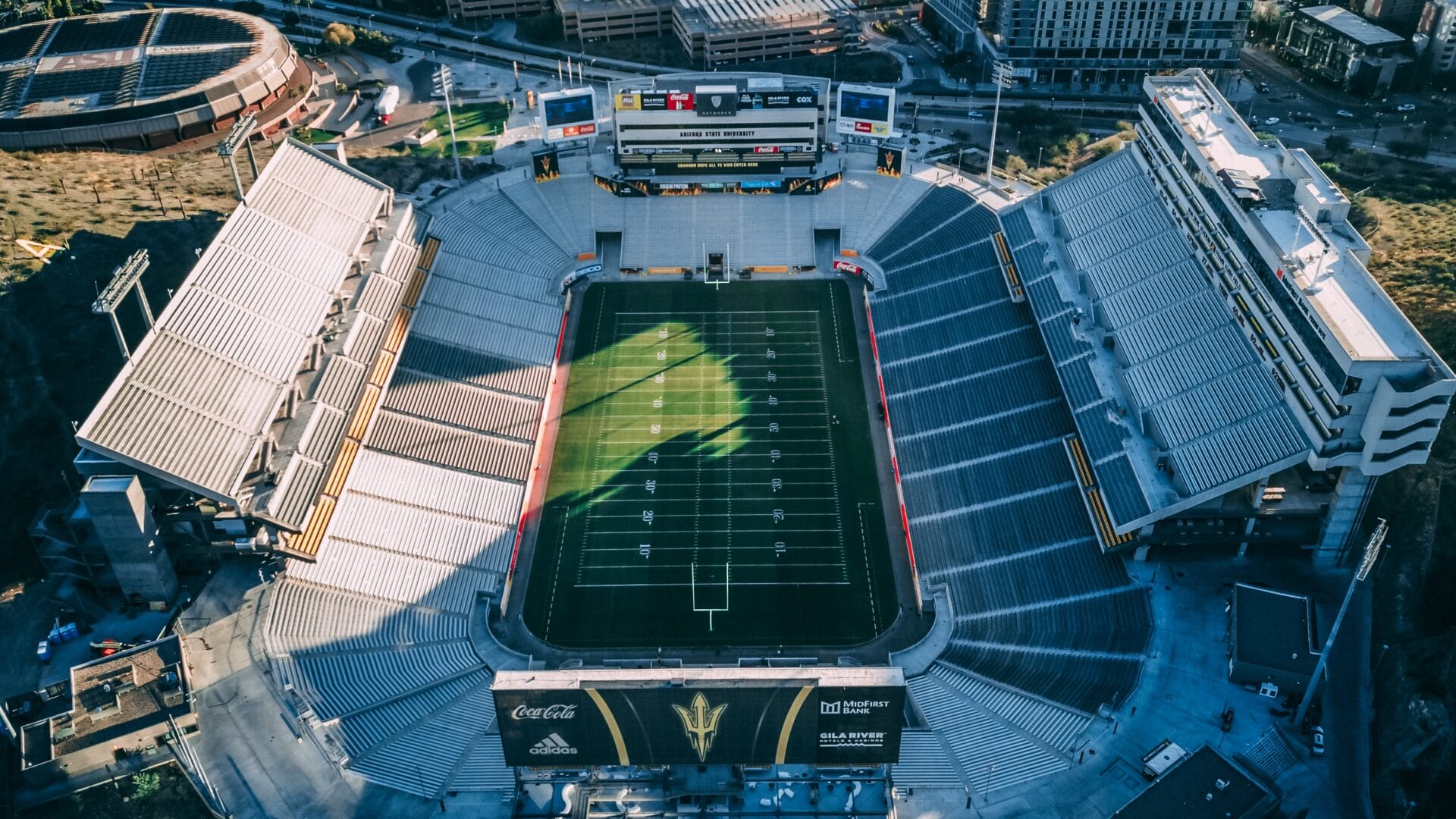
ASU students to support city’s sustainability projects
Peoria Times
June 27, 2019
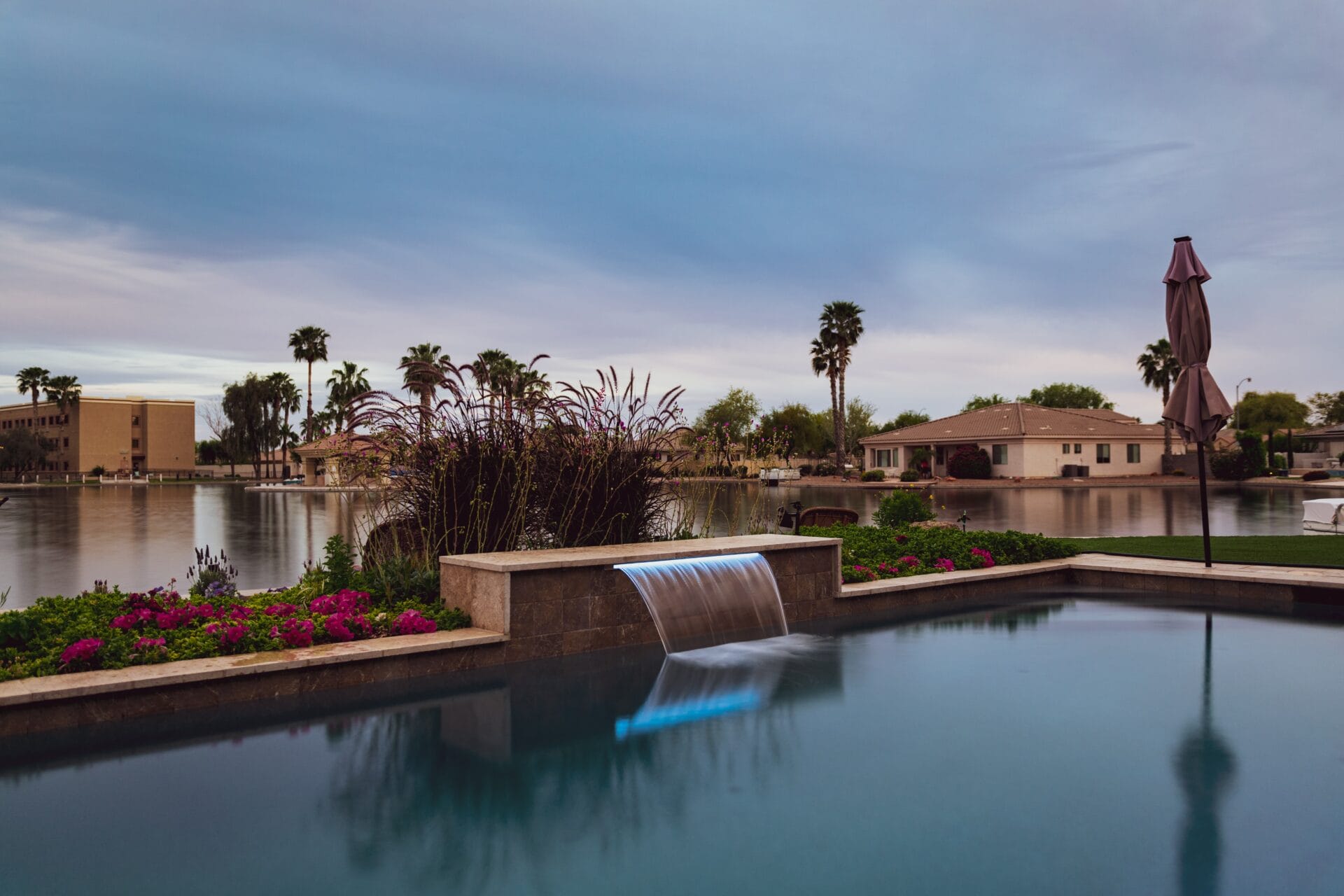
Paving a path to the future: Peoria teams with ASU to improve city
Your Valley
June 26, 2019

ASU’s Project Cities program connects students with cities for a more sustainable state
The State Press
February 11, 2019
